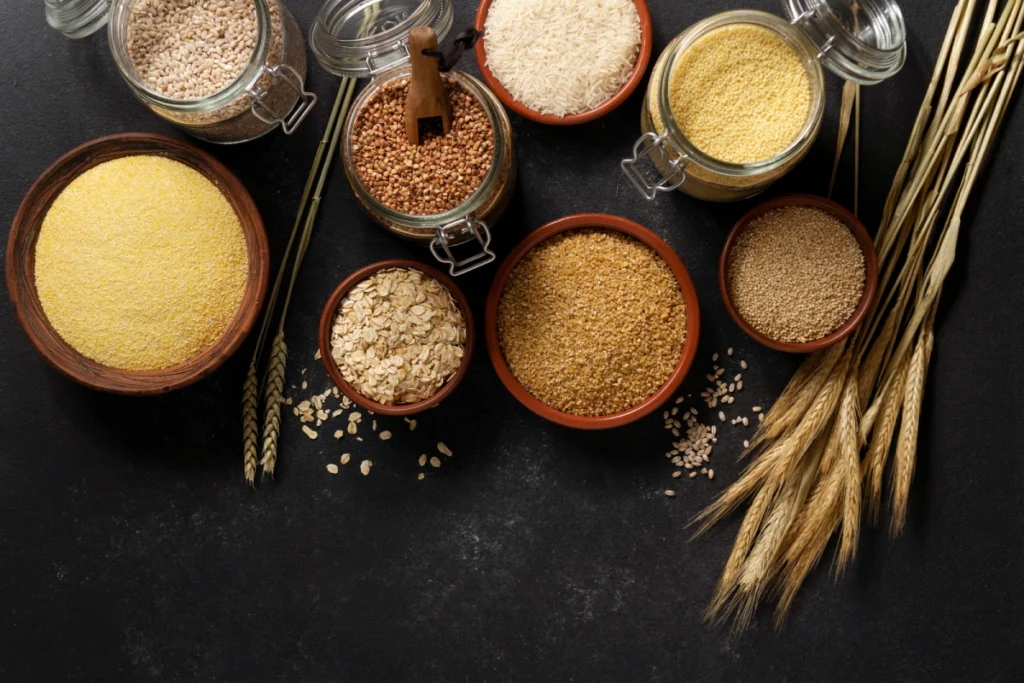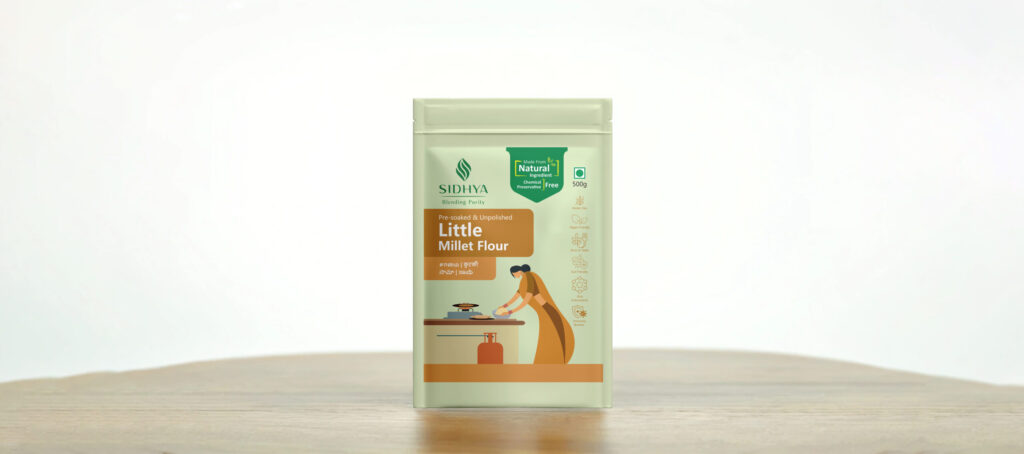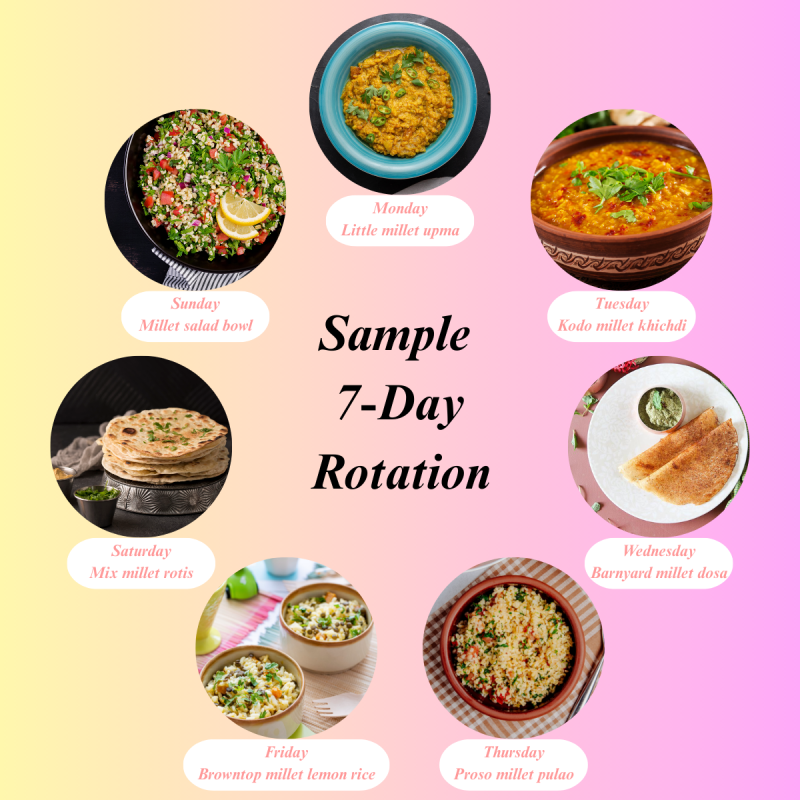5 Lesser Known Millets You Should Add to Your Diet Today

Over the recent years, millets have been making a big comeback in the Indian kitchen. From maintaining a healthy weight to blood sugar control, the benefits of millets are supported by both research studies and tradition. Apart from ragi, jowar and bajra, there are many types of millets in India, 5 lesser known millets such as little millet, kodo millet, barnyard millet, proso millet, and browntop millet. These gluten-free millets support weight management, diabetes management and overall wellness.
Table of Contents
Health Benefits at a Glance
Modern science is catching up with what our ancestors intuitively knew: millets are nutrient-dense and protective against various lifestyle diseases.
Top 3 Millet Benefits:
1. High in fibre, which promotes satiety and supports gut health
2. Rich in plant protein, essential for muscle repair and recovery.
3. Low glycemic index (GI) foods that help stabilize blood sugar levels
🧪 A 2024–2025 evidence review showed that regular millet consumption improves glycemic control, lowers body fat, and reduces LDL cholesterol, supporting overall heart health.1,3
Nutritional Profile (Per 100g)
Macro & Micro Snapshot
| Nutrient | Average Value (5 millets) |
| Calories | 330 – 360 kcal |
| Protein | 9 – 12 gm |
| Fibre | 8 – 10 gm |
| Iron | 2 – 4 mg |
| Magnesium | 90 – 110 mg |
| B-vitamins | Moderate – High |
Reference: Indian Council of Medical Research – Food Composition Tables (2020)6
Meet the 5 Lesser Known Millets
Little Millet (Kutki / Samai)
This little powerhouse aids in weight management thanks to its high fiber content. With a low to medium glycemic index, it’s perfect for those managing diabetes. Think of trying a comforting little millet upma or pongal for breakfast!
🧪 A 2024 randomised controlled trial in India showed that women with gestational diabetes who consumed 200 g of millets daily had significantly lower post-meal blood glucose compared to controls.²

Kodo Millet (Kodo / Varagu)
Known for improved digestion and cholesterol control, kodo millet packs in more fiber and minerals than rice. It’s also favoured in kodo millet for weight management diet plans.
Barnyard Millet (Sanwa / Samo / Bhagar)
Perfect for fasting, barnyard millet fasting recipes like dosa or pulao are popular during Navratri. With its low glycemic index, it’s beneficial for diabetes management and appetite regulation.
🧪 A 2025 ScienceDirect review highlighted that barnyard millet is rich in fibre, antioxidants, and exhibits promising anti-diabetic properties.⁴
Proso Millet (Cheena / Vari)
Renowned for its easy digestibility, proso millet benefits include better gut health and energy release. Proso millet nutrition shows higher B-vitamins compared to wheat, making proso millet vs wheat a strong case for inclusion in rotation diets.
Browntop Millet (Korale)
One of the rarest, browntop millet benefits include detox support and improved blood sugar control. Easy browntop millet recipes include lemon rice or millet salad.
🧪 A 2025 Journal of Diabetology survey among people with diabetes revealed that millet-based meals showed a lower glycemic index than rice dishes. But awareness about browntop and other millets was still low.⁵
Millet Rotation : Why Diversity on Your Plate Matters?
Incorporating a variety of millets in your meals is key! A millet diet plan not only enhances your nutrient intake but also keeps your meals exciting.

Who Should Limit or Avoid Millets?
While millets offer numerous benefits, moderation is essential. Overconsumption can spike blood sugar levels, and some millets contain goitrogens, which may pose issues for those with thyroid conditions. Learning how to cook millets like soaking them for 6 to 8 hours can help reduce anti-nutrients and enhance nutrient absorption.
Easy Indian Recipes to Get Started
1. Little millet upma recipe : Use 1 cup millet to 2.5 cups water, and toss in your favorite veggies.
2. Kodo millet khichdi recipe : Cook it with dal, turmeric, and a touch of ghee.
3. Barnyard millet vrat dosa : Ferment with urad dal, perfect for fasting!
4. Proso millet pulao : Mix with peas, carrots, and spices.
5. Browntop millet salad : Combine with cucumber, lemon, and fresh herbs.
Millets vs Rice/Wheat: What to Choose When
| Grain | Glycemic Index (GI) | Fibre (gm) | Protein (gm) | Key Benefits | When to Use |
| Rice | High | Low | Low | Quick energy | Best for athletes needing fast energy/ light meals |
| Wheat | Medium | Moderate | Moderate | Provides steady energy | Daily staple for chapatis, parathas |
| Little Millet | Low to Medium | High | Moderate | Diabetes management, satiety | Breakfast upma, pongal, light dinner |
| Kodo Millet | Low to Medium | High | Moderate | Digestion, cholesterol support | Khichdi, pulao, lunch |
| Barnyard Millet | Low | High | Moderate | Fasting, blood sugar control | Navratri recipes, vrat dosa |
| Proso Millet | Low to Medium | Moderate | Higher B-vitamins | Gut health, easy digestibility | Pulao, snacks, rotation diets |
| Browntop Millet | Low | High | Moderate | Detox, diabetes management | Salads, lemon rice, dinner bowls |
Where They’re Grown & Why It Matters (Regional Significance)
Different types of millets in India are cultivated across diverse regions:
1. Little millet: Karnataka, Madhya Pradesh, Tamil Nadu, Maharashtra, Chhattisgarh
2. Kodo millet: Maharashtra, Tamil Nadu, Madhya Pradesh, Chhattisgarh, Karnataka
3. Barnyard millet: Karnataka, Madhya Pradesh, Chhattisgarh, Tamil Nadu, North-East states
4. Proso millet: Maharashtra, Karnataka, Tamil Nadu, Madhya Pradesh
5. Browntop millet: Karnataka, Tamil Nadu
Conclusion
The benefits of millets go far beyond tradition, they’re science-backed solutions for modern health challenges. These 5 lesser-known millets bring diversity, nutrition, and sustainability to your plate. Whether it’s millets for weight management, millets for diabetes, or simply adding gluten-free millets for variety, these ancient grains are ready to reclaim their spot in our daily diets.
FAQs
1. Which millets are best for diabetes?
Low GI millets like little, kodo, and barnyard are excellent millets for diabetes as they help regulate blood sugar naturally.
2. How do I cook millets so they’re fluffy?
Rinse well, soak for 6 to 8 hours, and cook in a 1:2.5 millet-to-water ratio. This tip ensures fluffy grains and reduces antinutrients.
3. Which millet is best for weight management?
Little millet and kodo millet are popular millets for weight management because their fiber promotes satiety and reduces overeating.
4. Can I eat millets every day?
Yes, but follow a millet rotation or millet diet plan, switching grains daily helps maximize nutrition and prevents monotony.
5. Are millets good for PCOS and heart health?
Yes, high-fiber and protein-rich millets support hormone balance in PCOS and lower cholesterol, making them excellent millets.
References :
1. Jacob, J., Krishnan, V., Antony, C., Bhavyasri, M., Aruna, C., Mishra, K., Nepolean, T., Satyavathi, C. T., & Visarada, K. B. R. S. (2024). The nutrition and therapeutic potential of millets: an updated narrative review. Frontiers in Nutrition, 11. https://doi.org/10.3389/fnut.2024.1346869
2. Duraiswamy, M., Jayaseelan, V., Ramakrishnan, J., Rengaraj, S., Krishnamoorthy, Y., Kais, M., & Subbaiah, M. (2024). Effect of Millets Once a Day on Glycaemic Control among Women with Gestational Diabetes Mellitus in a Tertiary Care Setting – A Randomized Controlled Trial. Indian journal of endocrinology and metabolism, 28(6), 581–588. https://doi.org/10.4103/ijem.ijem_314_24
3. Mohanan, M. M., Vijayakumar, A., Bang-Berthelsen, C. H., Mudnakudu-Nagaraju, K. K., & Shetty, R. (2025). Millets: Journey from an Ancient Crop to Sustainable and Healthy Food. Foods, 14(10), 1733. https://doi.org/10.3390/foods14101733
4. Manisha Singh, Ranjana Singh, Prabhjot Kaur Sabharwal, Twinkle Kumar Sachchan, Vijay Singh Sharanagat, Barnyard millet: A review of its nutritional, anti-nutritional characteristics, processing and value-added products, Journal of Food Composition and Analysis, Volume 148, Part 2, 2025, 108262, ISSN 0889-1575, https://doi.org/10.1016/j.jfca.2025.108262
5. Sravani, Sure Sai; Shriraam, Vanishree1. Awareness of Millets and their Health Benefits among Patients with Diabetes. Journal of Diabetology 16(2):p 158-164, April-June 2025. | DOI: 10.4103/jod.jod_161_24
6. R, Deepthi & NS, Anil & DM, Narayanaswamy & Murugan, Sathiabalan & R, Balakrishnan & Lonimath, Ashwini. (2023). Recommended dietary allowances, ICMR 2020 guidelines: A practical guide for bedside and community dietary assessment – A review. Indian Journal of Forensic and Community Medicine. 10. 4-10. 10.18231/j.ijfcm.2023.002.